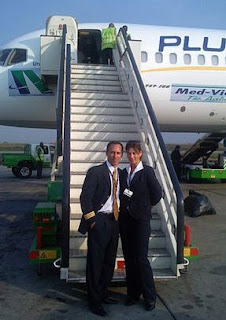
Transhumanismo
Publicado por Daniel Estulin. marzo 13 2012 »
Disculpad por estar tan poco por estas páginas. Estamos rodando el documental sobre Bilderberg con un presupuesto bastante alto y una súper producción entre Madrid, Mónaco, Bruselas, Ámsterdam, Oosterbeek (sede de Bilderberg), Leiden (su oficina central), Roma, Venecia, Florencia, Washington, Virgini y Frankfurt. Contamos con la presencia de un ex candidato a la Casa Blanca, Subsecretaria de la vivienda con Bush padre, algunos de los principales economistas del mundo, políticos, pensadores, ex agente de la NSA y la CIA, editores, investigadores y periodistas y abogados de prestigio internacional. No es INSIDE JOB, pero os prometo que no se quedará corto.
Disculpad por estar tan poco por estas páginas. Estamos rodando el documental sobre Bilderberg con un presupuesto bastante alto y una súper producción entre Madrid, Mónaco, Bruselas, Ámsterdam, Oosterbeek (sede de Bilderberg), Leiden (su oficina central), Roma, Venecia, Florencia, Washington, Virgini y Frankfurt. Contamos con la presencia de un ex candidato a la Casa Blanca, Subsecretaria de la vivienda con Bush padre, algunos de los principales economistas del mundo, políticos, pensadores, ex agente de la NSA y la CIA, editores, investigadores y periodistas y abogados de prestigio internacional. No es INSIDE JOB, pero os prometo que no se quedará corto.
clic a Foreign Policy
Os recuerdo que uno de los capítulos de INSTITUTO TAVISTOCK habla del transhumanismo, CyBorg y el concepto de cambiar la imagen del hombre. Obviamente, si la élite quiere controlar el mundo necesita controlar el alma del ser humano.

A ver qué os parece. Prestad la atención. Lo que estamos viendo en tiempo real no es una fantasía barata de algún conspiranoico friki, sino la realidad diseñada y bien pensada desde el más alto nivel del poder.

Las imágenes no son de algún medio desconocido sino de mainstream total. FP, Foreign Policy es la revista del Consejo de Relaciones Exteriores, CFR, el gobierno en la sombra de Estados Unidos.
Podéis teclear TRANSHUMANISM en Google y ver los resultados.
PD. Por favor, no me pidáis que ponga el artículo en español. Yo no trabajo para vosotros. Trabajo para mí, algo que algunos aún no han entendido. Tenéis en la web el traductor y si no Google y si no traductores de todos los periódicos principales de España y si no…en inglés.
Daniel Estulin
Artículo /Article ¿ES POSIBLE UN HOMBRE BIÓNICO? Is the Six-Million-Dollar Man possible?
By James Gallagher Health and science reporter, BBC News
Can we give ourselves super vision, super strength and super speed?
Science fiction is littered with the theme of upgrading the human body with machinery.
In the 1970s classic TV series The Six Million Dollar Man, the main character -- astronaut Steve Austin -- is horrendously injured in a test flight accident. He was a man “barely alive” but, as the title sequence explained, science could come to his rescue.
“Gentlemen, we can rebuild him. We have the technology. We have the capability to make the world’s first bionic man. Steve Austin will be that man. Better than he was before. Better, stronger, faster.”
His array of upgrades included an eye with zoom and infrared vision. Bionic legs which could give a car a good race and an arm with the strength of a bulldozer.
Meanwhile, as we have been discovering in the Bionic Bodies series, bionics are having a transformative role in the real world. Artificial hearts implanted into the chest can keep patients alive until a transplant becomes available. Cochlear implants have restored hearing to people who were once deaf. Bionic eyes are giving sight to the blind and a range of hands, arms and legs are restoring lost movement.
But the focus is on keeping people alive or restoring lost function. What about the potential to expand capabilities, what is known as human augmentation? Could a six-million-dollar man ever be built?
Enhancement”Well, first of all, it’s going to cost a lot more than six million dollars,” says Richard Yonck, foresight analyst with Intelligent Future in Seattle, “but there’s an awful lot of technologies under way that will come very close to achieving that.”

The modular prosthetic limb, in development at Johns Hopkins University’s Applied Physics Laboratory, is one of the most advanced bionic arms
He said: “I see strength, certainly, and I would say the equivalent to the bionic arm he had -- that kind of strength -- is certainly feasible with time.
“He had bionic vision; the contact lens is one approach and there are developments in retinal implants which are currently working to restore sight. That type of technology will lead to further capabilities, I’m sure, with time.”
However, what about running at speeds of 60mph (100km/h)?
“In physical terms, it’s definitely feasible; in practical terms, I’d really question that, given the difficulties.
“Bipedalism was not really designed for that kind of running. There’s considerably more efficient ways of moving at 60mph. I don’t know if there’s enough benefit to overcome the difficulties of 60mph running speed.
“I totally believe that very seriously enhanced and augmented abilities are going to be available to human beings both in the general public and certainly at the military level.
“In terms of strength, in terms of endurance, in terms of sensory capabilities -- all of these are most definitely going to be, in the coming decades, seeing some significant progress.”
One of the challenges with human augmentation is that the human body is still going to be quite weak. It is remarkably easy to damage the body in everyday life, from preparing dinner to playing football.
It might be possible to attach a bionic arm with enough strength to lift a car. However, actually doing so could cripple the rest of the body. Falling over while running at 60mph could be equally damaging.
TimescalesCurrent bionic body part replacements can imitate human function, but considerable technological developments will be necessary before entering an era of enhancement.
Dr Anders Sandberg, from the Future of Humanity Institute at the University of Oxford, told the BBC: “I do think it is possible to reconstruct a body quite easily and get into a six-million-dollar man situation.”
For the next 10 years, he thinks the field will be at the level of “pretty nice prosthetics”, but would then start to be “significantly better” than the real thing.
He said: “I think mid-century, I would be rather surprised if there wasn’t a lot of implants and enhancements around.”
I think it is quite likely that humanity will fight back. I don’t want to be enhanced at all.” Prof Noel Sharkey University of SheffielOptions could include “sensory augmentation; ways of extending our senses such as infra-red sight or ultra-violet; or extending hearing.”
He says one day blind people who are fitted with artificial retinas will not only be given sight, but, rather like a smartphone, a range of apps will emerge that would allow recording, zooming and augmented reality.
“Eventually you reach the point where you can start doing things that normal people can’t do,” he said.
Anybody interested?”It is quite possible that while we’re kind of anxious about the end product that seems to come from science fiction, we’ll be quietly accepting versions of it,” argues Emily Sargent who is preparing the Wellcome Collection’s exhibit, Superhuman.
She cites the example of the introduction of in vitro fertilisation (IVF) which made people “incredibly nervous” and then “very quickly we became accustomed to it”.
Prof Noel Sharkey, from the University of Sheffield, is not convinced that augmentation will ever catch on: “You’ve got perfectly good legs and arms; I’m not sure people will want other things attached.
“I think it is quite likely that humanity will fight back. I don’t want to be enhanced at all. I’m a human, I love being a human.”

Brain-controlled Cyberdyne’s Hal suit allows disabled patients to walk again
However, he can see enhancements coming from “exoskeletons” -- basically robotic suits.
It already conjures up the idea of the people flying round like the Marvel Comics superhero Iron Man, but some suits are already being made.
The Japanese company Cyberdyne has already developed a suit called Hal. It can help people who are no longer able to walk to regain their mobility by picking up electrical signals from the nerves which used to tell limbs to move and converting them into instructions for the suit.
The other option for Prof Sharkey is devices which can be controlled by thought, but which are not part of the human body.
He said: “If I want a really really strong arm, rather than having it attached to my body, it would be much better if it was just alongside me and just moved when I moved and did whatever I wanted. I think you might see that.
“So I can imagine a building site for the future, for instance, where there are builders wearing these exoskeleton suits and being accompanied by tools that do whatever they want without having to press buttons and things.”
So does he think there will be a six-million-dollar man?
“No Steve Austins, I think, but put it this way -- I couldn’t rule it out.”
In 1979 the BBC’s Horizon looked at whether a bionic man could be created
Related Stories
- 1979: ‘The Real Bionic Man’ 12 MARCH 2012, HEALTH
Related Internet links
.
**********
.
**********
.
Chips para humanos Implantes de futuro, Ya nos los quieren meter como algo bueno
..
..
..
.
.
**** otros ****
.
.
**********
**********
.
..
..









 X
X X
X X
X X
X X
X X
X




































No hay comentarios:
Publicar un comentario
Tu comentario está pendiente de moderación.